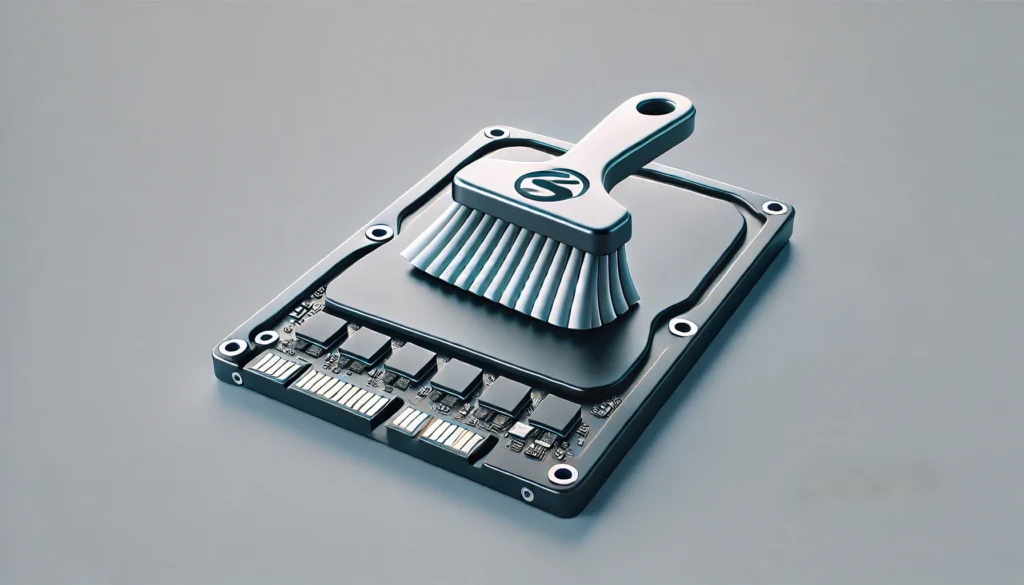What is TRIM?
Think of TRIM as an assistant that helps keep your SSD clean and organized so that it can operate quickly. When you delete files, your computer marks them as no longer needed. TRIM then steps in to clean up these marked locations by removing the old data. This keeps your SSD always ready to quickly store new data.
How does TRIM work?
When you save something on an SSD, the drive first looks for a free space. If no space is available, it deletes the unnecessary data and then writes the new information. Without TRIM, this process can become very slow because the SSD must constantly erase old data before new data can be written. TRIM performs its cleanup work in the background, before the free space is actually needed, which keeps your SSD fast and efficient when writing.
Is TRIM a problem for data recovery?
With older hard drives, it is often possible to recover deleted data. With SSDs, it's more complicated. Once TRIM has removed the old data, it is truly gone. This makes it nearly impossible to recover something that has been deleted. This is good for security because no one can recover and see the old data, but it can be problematic if you accidentally delete something.
What can you do?
Since SSDs continue to operate even when they are just connected to a power source, it is important to completely shut down the system and disconnect the SSD from power immediately after accidentally deleting data.
Conclusion
TRIM is a valuable assistant that keeps your SSD fast and efficient by ensuring it is always ready to accept new data. However, TRIM makes data recovery more difficult. Therefore, it is important to regularly back up your important files to stay on the safe side.



